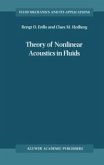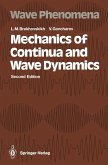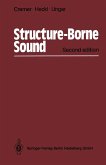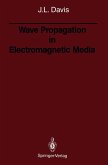An ideal text for advanced undergraduates, Principles of Vibration and Sound, Second Edition provides the foundations needed to understand the acoustics of rooms and musical instruments, as well as the basics for scientists and engineers interested in noise and vibration. The Second Edition contains four new chapters devoted primarily to applications of acoustical principles in everyday life: Microphones and Other Transducers; Sound in Concert Halls and Studios; Sound and Noise Outdoors; and Underwater Sound.
Rossing and Fletcher present the physics of mechanical vibrating systems, emphasizing normal modes of vibration. Beginning with the basics of free and forced motions of simple harmonic oscillator (with electrical analogs indicated where appropriate), they then proceed to vibrations in one-dimensional systems, such as strings and bars, and two-dimensional systems, such as membranes and plates.
The discussion of coupled systems includes strong as well as weak coupling and presents both mechanical and electrical examples. The treatment includes a fairly detailed discussion of nonlinear systems and self-excited oscillators, as well as a brief explanation of modal analysis, including finite-element methods and modal testing. The second part of the book discusses the propagation of sound in air, including radiation, transmission, absorption, and diffraction. This treatment of radiation covers point, dipole, line, plane and other sources, both with and without baffles, and the propagation of sound in various kinds and shapes of pipes, horns and other acoustics components.
About the authors:
Thomas Rossing is Professor Emeritus of Physics at Northern Illinois University. He is a Fellow of the American Physical Society, Acoustical Society of America and the American Association for the Advancement of Science. He has authored 10 other books.
Neville Fletcher is Professor Emeritus of Physics of the University of New England in Australia and is now a Visiting Fellow at the Australian National University. He is a Fellow of the Australian Academy of Science, the Australian Academy of Technological Sciences and Engineering, the Acoustical Societies of both America and Australia, and the Institutes of Physics of both Australia and the UK. He has authored four other books.
Rossing and Fletcher present the physics of mechanical vibrating systems, emphasizing normal modes of vibration. Beginning with the basics of free and forced motions of simple harmonic oscillator (with electrical analogs indicated where appropriate), they then proceed to vibrations in one-dimensional systems, such as strings and bars, and two-dimensional systems, such as membranes and plates.
The discussion of coupled systems includes strong as well as weak coupling and presents both mechanical and electrical examples. The treatment includes a fairly detailed discussion of nonlinear systems and self-excited oscillators, as well as a brief explanation of modal analysis, including finite-element methods and modal testing. The second part of the book discusses the propagation of sound in air, including radiation, transmission, absorption, and diffraction. This treatment of radiation covers point, dipole, line, plane and other sources, both with and without baffles, and the propagation of sound in various kinds and shapes of pipes, horns and other acoustics components.
About the authors:
Thomas Rossing is Professor Emeritus of Physics at Northern Illinois University. He is a Fellow of the American Physical Society, Acoustical Society of America and the American Association for the Advancement of Science. He has authored 10 other books.
Neville Fletcher is Professor Emeritus of Physics of the University of New England in Australia and is now a Visiting Fellow at the Australian National University. He is a Fellow of the Australian Academy of Science, the Australian Academy of Technological Sciences and Engineering, the Acoustical Societies of both America and Australia, and the Institutes of Physics of both Australia and the UK. He has authored four other books.
Dieser Download kann aus rechtlichen Gründen nur mit Rechnungsadresse in A, B, BG, CY, CZ, D, DK, EW, E, FIN, F, GR, HR, H, IRL, I, LT, L, LR, M, NL, PL, P, R, S, SLO, SK ausgeliefert werden.
From the reviews of the second edition: "This book is designed to serve as a text for an introductory course in acoustics for physics or engineering students. ... On the basis of its clear and concise exposition of a mix of basic and applied subject matter, I would recommend this book for consideration as a text in an introductory acoustics course. ... I again wish to acknowledge the overall excellence of Principles of Vibration and Sound as a solid text for introductory acoustics." (Arnold Tubis, Journal of the Acoustical Society of America, Vol. 116 (5), 2004)









